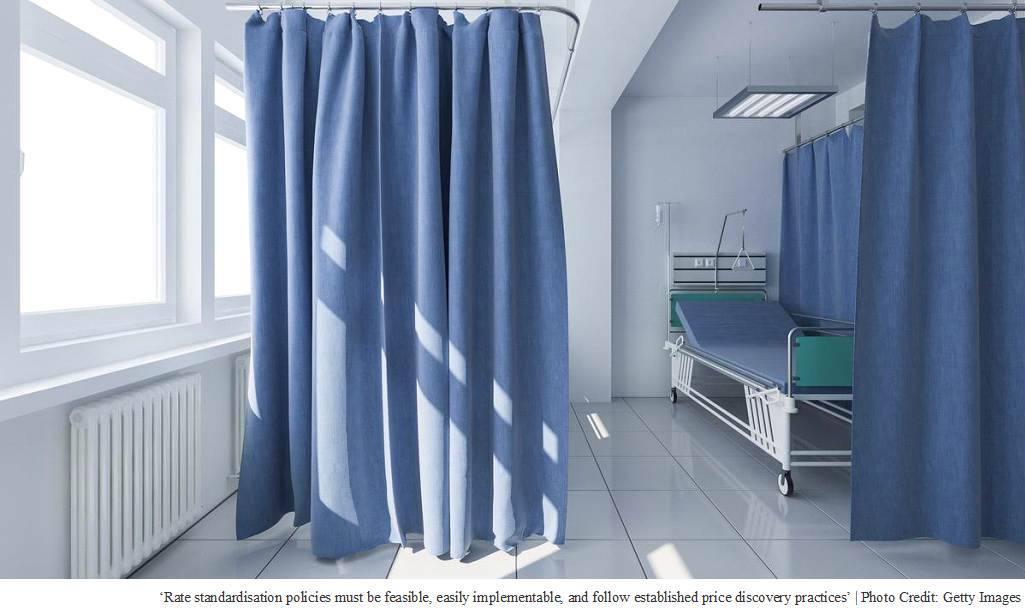Court’s nudge on hospital charges, a reform opportunity
30 Apr 2024
Opinion: Arun Tiwari, Sumit Kane and Ajay Mahal.
Affordable hospital care requires health-care financing reforms that go beyond price regulations.
Benchmark for pricing
In an unregulated market-driven scenario, health-care providers focus on profit through higher prices and overprovision of care (supplier-induced demand). One potential solution, “yardstick competition”, involves regulatory authorities setting benchmark prices based on market observations. However, this approach faces challenges in India due to diverse patient profiles, unreliable price data, and weak regulatory frameworks. Relying solely on competition from government hospitals is insufficient due to long wait times, perceived service quality issues, and patient information gaps, perpetuating the risk of supplier-induced demand.
As the Court observed, pricing-related discussions must start with a benchmark for price determination. Standard treatment guidelines, or STGs, can help establish relevant clinical needs, the nature and extent of care, and the costs of total inputs required. STGs can address confounders that account for varying levels of care for various hospital procedures while ensuring clinical autonomy to respond to individual needs. Consequently, it enables valuing health-care resources consumed for the precise cost of multiple procedures.
Given limited regulatory capacity, STG formulation and adoption require that providers’ revenues are tied to fewer payers. Providers must rely on reimbursements from pooled payments, covering most of the population with low out-of-pocket (OOP) payment levels. With government support, payers and providers could agree on pricing that provides a reasonable and sustainable surplus over and above the input costs.
However, this would be hindered if providers could access markets with OOP payments as an alternative or add-on to reimbursement payments. Several countries have accomplished this difficult feat through coordinated health-care purchasing reforms, highlighting that pricing issues are health systems challenges rather than law-and-order problems.
In India, over half the total health expenditure is OOP. The other half comes from a multitude of publicly and privately pooled resources. The private sector is predominantly composed of small-scale providers. Even if rates are standardised, their implementation will be uncertain. Enforcement mechanisms for adherence to prescribed rates remain unclear, raising questions about the feasibility of such regulatory measures. What if providers do not adhere to the prescribed procedure rates, much like they have resisted the rates in various health schemes?
Weak implementation
Command-and-control regulations through pecuniary measures such as price caps can swiftly influence actors’ behaviour by making them follow the pronouncements. However, when enforcement mechanisms are weak, these effects are temporary because the overall environment remains unchanged. The suggested measures face enormous enforcement challenges. Only 11 States and seven Union Territories have notified the Clinical Establishment Act, and its implementation remains weak, with little or no evidence about the impact on affordability, care quality, and provider behaviour.
Similar design and implementation capacity constraints have hampered the effective adoption of the National Pharmaceutical Pricing Authority’s decision to cap the prices of stents and implants since 2017 and of the many directives that mandate doctors to prescribe generic medicines.
Rate standardisation, through capped prices, may not address the fundamental problem of stakeholders’ misaligned incentives. A comprehensive health financing reform strategy informed by robust and ongoing research on appropriate processes for formulating and adopting STGs must be in place, without which the actual pricing can be manipulated and justified in any manner. For example, hospitals with lower average revenue per bed can push their rates higher by appealing to their better care quality. Without STGs, it will be nearly impossible to verify such claims objectively.
Limited data
The Pradhan Mantri Jan Arogya Yojana and the Department of Health Research have made significant strides in developing STGs for common conditions and adopting a comprehensive costing framework. Efforts are also ongoing to create an Indian version of Diagnostics-Related Groups (DRGs). Although the insurance industry initiated STGs for hospitals in 2010, progress was hindered by a lack of representative and accurate costing data due to limited participation from private hospitals.
This judgment is an opportunity to create effective processes to solve a major health system problem. Rate standardisation policies must be feasible, easily implementable, and follow established price discovery practices. Future efforts must build on previous and ongoing health financing reforms, address anticipated challenges, and ensure broader stakeholder participation.
Arun Tiwari is a Fellow at the Centre for Health Policy and Systems (CHPS), National Council of Applied Economic Research. Sumit Kane is a professor at the University of Melbourne and Centre for Health Policy and Systems (CHPS), National Council of Applied Economic Research. Ajay Mahal is a professor at the University of Melbourne and Centre for Health Policy and Systems (CHPS), National Council of Applied Economic Research.
Published in: The Hindu, 30 Apr 2024






